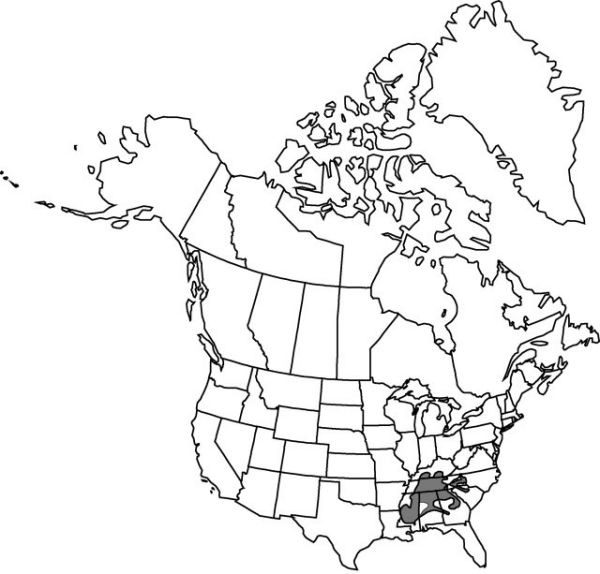Difference between revisions of "Trillium cuneatum"
Autik. Bot., 133. 1840.
imported>Volume Importer |
imported>Volume Importer |
||
| Line 51: | Line 51: | ||
|publication year=1840 | |publication year=1840 | ||
|special status=Endemic | |special status=Endemic | ||
| − | |source xml=https:// | + | |source xml=https://bitbucket.org/aafc-mbb/fna-data-curation/src/2e0870ddd59836b60bcf96646a41e87ea5a5943a/coarse_grained_fna_xml/V26/V26_124.xml |
|genus=Trillium | |genus=Trillium | ||
|subgenus=Trillium subg. Phyllantherum | |subgenus=Trillium subg. Phyllantherum | ||
Latest revision as of 21:12, 5 November 2020
Rhizomes horizontal, brownish, short, thick, praemorse, not brittle. Scapes 1–5, 1.6–4.5 dm, smooth to rough near bract attachment. Bracts held well above ground, sessile; blade green to purplish green, weakly to strongly mottled, mottling becoming obscure with age, ovate, ovate-elliptic, occasionally ovate-orbicular with margins overlapping, 7–18.5 × 7–13 cm, usually widest below middle, not glossy, base ± rounded, margins of distal 1/3 convex-curved to apex, apex acuminate to acute. Flower borne upon bracts, erect, odor usually pleasant, faint, spicy, reminiscent of odor of bruised sweetshrub (Calycanthus) leaves, occasionally musty or unpleasant; sepals widely spreading, variably green, purple-streaked to all purple, oblong-lanceolate, 27–60 × 7–13 mm, margins entire, apex rounded to acute; petals long-lasting, erect, ± connivent, ± concealing stamens and ovary, maroon, maroon-purple, brownish purple, bronze, greenish purple, clear green, yellowish green, pale lemon yellow, or 2-colored, yellow distally with purple base, in occasional clones, flowers open or quickly fade to bright copper bronze, the particular color pattern is consistent from year to year, fading to browner tones with age except in yellow or green forms, not spirally twisted, shape quite variable across range, elliptic-obovate to oblanceolate, 4–7 × 0.9–2.7 cm, thick-textured, with widest portion at or above middle, narrowed to usually cuneate basally, not clawed, margins flat, entire, apex acute, rounded-acute to obtuse; stamens erect, straight, brownish purple-green, 11–18 mm; filaments brownish purple, 1.5–3.5 mm, widest at base; anthers erect, straight, brownish gray, 7–14 mm, dehiscence latrorse or occasionally introrse; connectives straight, scarcely (0.5 mm or less) if at all extended beyond anther sacs; ovary maroon, ovoid to vase-shaped, weakly 6-angled or -ridged when mature, 12–15 mm; stigmas erect, slightly diverging to spreading, distinct, purplish gray, linear-subulate to thickly subulate, 4–15 mm, fleshy. Fruits green or with purple streaks, ovoid, very obscurely angled or angles no longer apparent, 2 × 1–1.5 cm, mealy or pulpy, fleshy, not juicy. 2n = 10.
Phenology: Flower late winter–mid spring (early Mar–mid Apr).
Habitat: Rich, mostly upland woods, especially limestone soils, also less calcareous sites, occasionally found in old fields, ditches, or coal-mine tailings
Elevation: 50–400 m
Distribution

Ala., Ga., Ky., Miss., N.C., S.C., Tenn.
Discussion
Trillium cuneatum has escaped locally and become established in Michigan and other states. It is most frequent on the Ordovician limestone-derived soils of southern Kentucky and Tennessee, and is perhaps the most vigorous and certainly the largest of the eastern sessile trilliums. Numerous, mostly unnamed color forms occur. Plants from the lower piedmont of Georgia, Alabama, and Mississippi, considered by most botanists to be of this species, have smaller, narrower petals than specimens from northeastern Alabama northward to Kentucky, and they are therefore sometimes difficult to place with certainty.
Selected References
None.